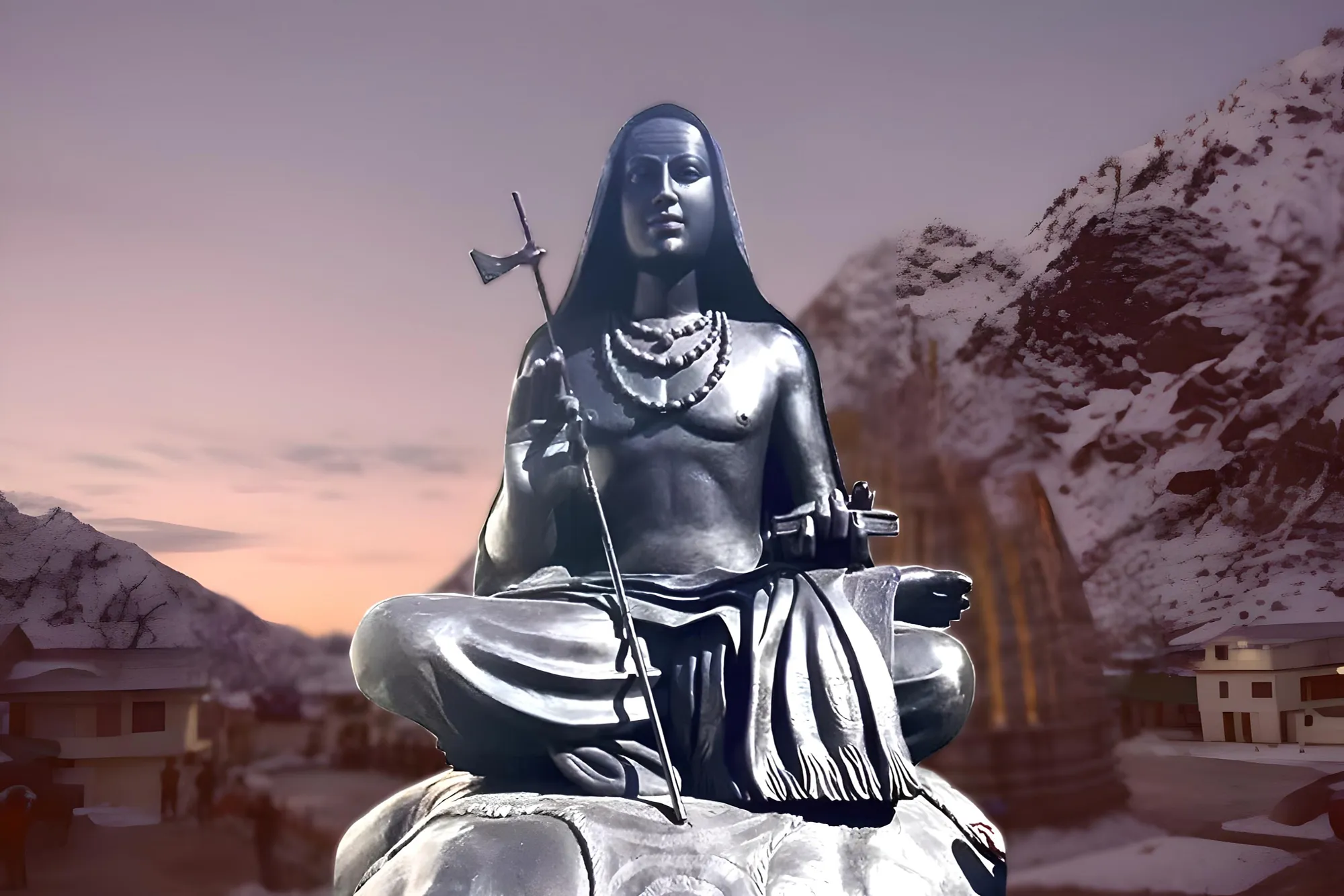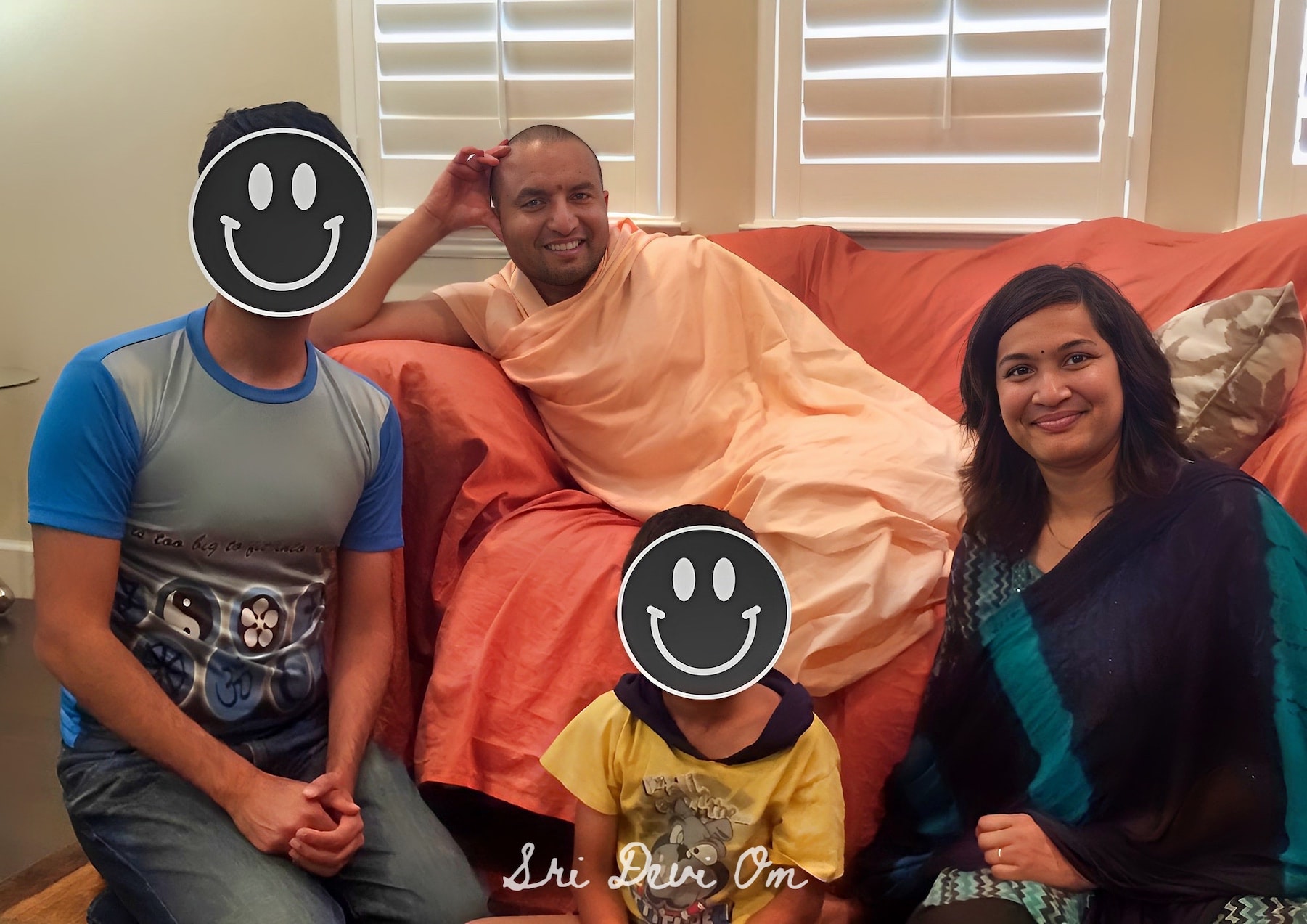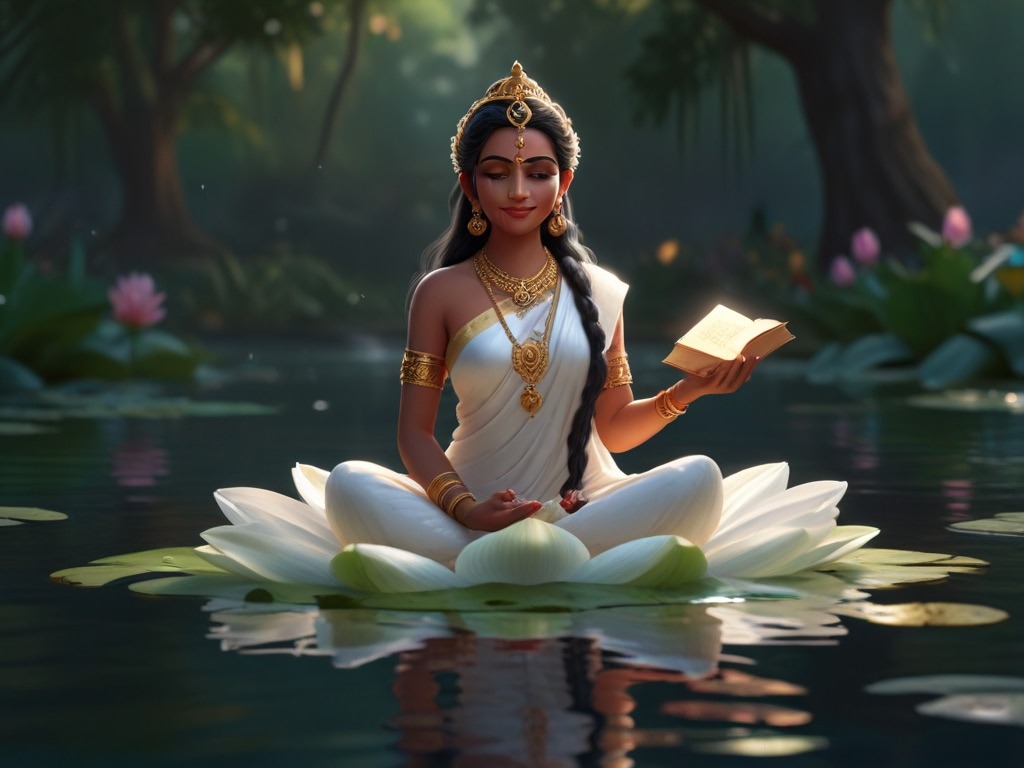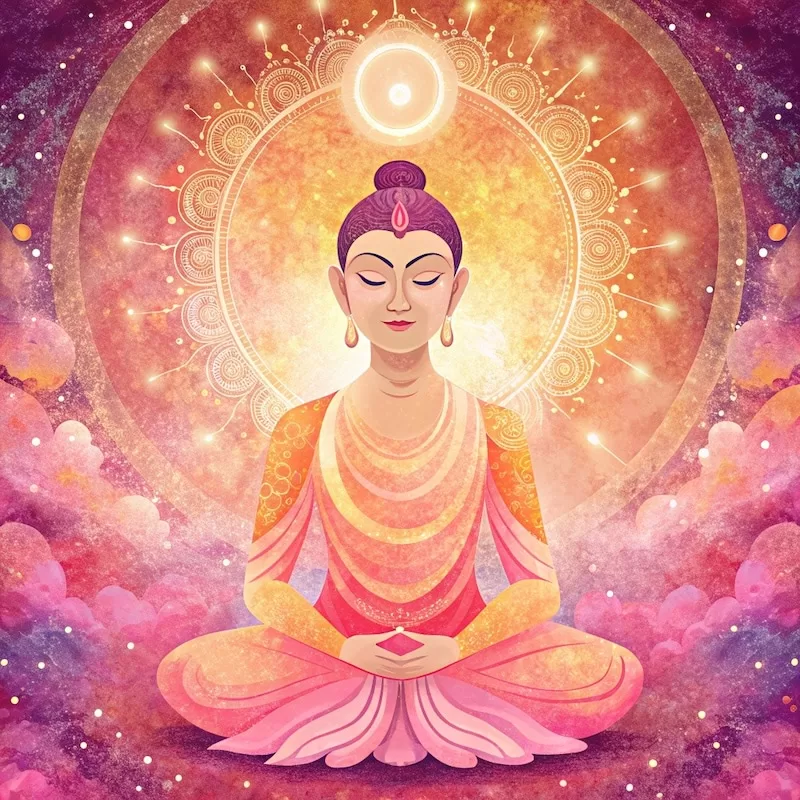Long before the dawn of the eighth century, in the town of Kalady in Kerala, India, there resided a virtuous couple of unwavering devotion, Shivaguru and Aryamba. For years, they had longed for a child, but the sands of time remained unrelenting and yielded them no offspring.
Then, on a glorious day, divine grace descended upon Aryamba. In a vivid dream, Lord Shiva blessed her with the boon of motherhood. Soon after, she conceived and delivered a beautiful male child, Kaippilly Sankaran Namboodiri, nicknamed Shankara in honor of Lord Shiva.
Following their tradition, Shankara’s parents initiated him into studying Vedas at the age of five. Within a short while, everyone noticed that this was no ordinary child. His soul, marked by profound intuition and deep spiritual wisdom, set him apart from his peers. By age eight, he had mastered the sacred texts, with his insights becoming the talk of the town.
Gaining knowledge often triggered an undesirable by-product: a bloated ego.As an antidote, spiritual learners lived the life of Brahmacharya — adhering to Divine Conduct / Discipline. As part of this, they were required to do Seva or selfless service. At times, they also begged for their daily food in the neighborhood, which was the ego-breaking task given to Shankara.
Per his routine, the young boy went to seek alms and reached the door of a modest home. In it lived a poor woman with nothing left for dinner except a tiny Amalaki, a gooseberry fruit she had stored for herself. Yet, without a second thought, she placed the fruit in Shankara’s begging bowl.
Deeply touched by her benevolence, Shankara sang a hymn to Goddess Lakshmi, his original composition, Sri Kanakadhara Stotram. It is said that within a short while, prosperity began to pour into the house of the selfless woman as if there had been a divine shower of abundance.
This incident made Shivaguru recognize the divinity of his son, but the man soon departed from the mortal plane. Aryamba continued to nurture her son, but in her insecurity, she tried to push Shankara towards a worldly life. However, the young boy’s intense devotion to Lord Shiva made him conclude that he would become a monk to fulfill his higher calling.
Gathering courage, Shankara approached his mother and spoke with calm resolve, “I wish to become a monk and dedicate myself to my spiritual quest.”
Aryamba refused to relent to her son’s wishes. Shankara, the ever-gentle soul, attempted to persuade her but to no avail. Unsure of how to proceed, he prayed, “Lord Shiva! Please help me fulfill my spiritual calling.”
Shortly after, he ventured to the river for a bath. Over there, in his mother’s presence, a ferocious crocodile caught his legs. Aryamba’s frantic cries for help went unheard because no one was nearby to lend assistance.
“I believe this is Lord Shiva’s doing,” Shankara cried out amidst his perils. “Allow me to become a monk, and this situation may be solved.”
Desperate to save her son, Aryamba prayed, “Lord Shiva, please save my son. I’ll let him be a monk.”
Miraculously, the crocodile released its captive and retreated, and Aryamba realized the depth of her son’s conviction. “If becoming a monk is your destiny, I cannot stand in your way,” she said with a heavy heart, tears flowing freely. “Promise me you will become a guiding light by upholding wisdom and compassion in every situation.”
Kneeling before his mother, Shankara pledged to fulfill her wishes. Aryamba blessed her son with a trembling hand and added a final request, “My son, even if you become a monk, I want you to do my last rites when the time comes.”
The eight-year-old Shankara agreed. That same day, he performed the rituals to accept monkshood by himself and then set out searching for a spiritual guru.
Journeying northward from his hometown, Shankara traveled for days until he arrived at the banks of the Narmada River. At Omkareshwar (present-day Madhya Pradesh), the young boy crossed paths with Govinda Bhagavatpada, also known as Govindapada.
The renowned Guru Govindapada inquired, “Who are you?”
In response, Shankara composed a poem with six verses, known as Nirvana Shatakam, in which he expressed his profound spiritual truth:
Cidānandarūpaḥ
Śivo’ham Śivo’ham
My True Form is
My Joyful Inner Self,
Because I am
The Liberated One!
I am Shiva!
Astounded, Govindapada welcomed Shankara as his student, and the young boy embraced the spiritual path with the fervor of a fish taking to water.
Under the tutelage of his guru, Shankara practiced severe austerities that took him to the threshold of spiritual liberation. Nonetheless, one conditioning of the mind prevented him from reaching the finish line — the ego of being from the upper caste.
Then, the transformative moment arrived. As Shankara walked down a narrow path, an individual from the lowest caste crossed his way. Held captive by the shackles of casteism, Shankara, in his misguided ego, demanded, “Move aside, you of lower caste.”
That person replied with sagacity, “Whom are you asking to move — my physical form or the divinity that resides in me?”
The profundity of the response struck Shankara, who had a stark revelation that shattered the walls of his ego. In that defining moment, he recognized the latent divinity in the man before him and in everything around him.
Dropping his final trace of ego, Shankara prostrated at the feet of the one he had previously considered inferior. Thus, he stood cleansed of his prejudices, reaching the utmost inner purity and ready for a revolutionary mission.
Shankara soon came to perceive the incredible mess that had overtaken spiritual practices in his era. Rituals had become barren, and their essence was scattered and obscured. None seemed to grasp the significance of the prevalent customs, and six different religions stood at odds with one another:
- Ganapatya: Worship of an animal form, Ganesha.
- Kaumara: Worship of God as a child, Karthikeya.
- Shaiva: Worship of God as a man, Shiva.
- Shakta: Worship of God as a woman, Shakti.
- Shaurya: Nature Worship
- Vaishnava: Worship of God as all genders, Vishnu.
To rectify the tumultuous situation, Shankara set out to collect and rewrite the scriptures of these six religions. He meticulously reorganized the teachings, uniting these six under One Universal Faith: Sanatana Dharma.
Thus, he turned those six erstwhile faiths into sub-traditions, ending the war of religions to promote world peace. He even proposed the replacement of all sectarian greetings with Namaste — I pay obeisance to you.
Additionally, Shankara introduced a seventh sub-tradition, Advaita Vedanta, a spiritual path less traveled until his time. This approach venerated the Formless Divine inside each person and beyond. It mirrored his experience with the unidentified person who had liberated him from his prejudices.
The sage also traversed the lands, debating against entrenched orthodox beliefs. Along his journey, he gathered a vast army of disciples who stood with him in his reformative endeavors. His unwavering dedication and ceaseless labor led to the revival of the ancient wisdom, now labeled as Sanatana Dharma.
To safeguard the wisdom he had cleaned up and rearranged, he established four prominent monastic centers, Mathas, in different corners of India: Jyotir Math in the north (present-day Uttarakhand), Sharada Peetham or Sringeri Math in the west (Karnataka), Dwarka in the west (Gujarat), and Govardhan in the east (Orissa). In addition, he founded centers in Sri Nagar (Kashmir) and Kanchipuram (Tamil Nadu).
With his mission almost nearing completion, he sensed it was time for his mother’s final journey. He returned to his hometown in time to be by her side. Utilizing his spiritual merits, he touched Aryamba’s forehead and gave her a Vision of the Divine to liberate her as she left her earthly form.
Unfortunately, when Shankara tried to cremate his mother’s body per her wish, the orthodox people of the town refused to help a monk perform funeral rites. Without support, he singlehandedly chopped and gathered the wood, transported his mother’s body, and performed all the rituals.
Afterward, tired of the world’s ways, he began his long walk northward. On the way, for many years on his extended travel, he taught the wisdom of Sanatana Dharma to everyone he met. Eventually, he reached the sacred shrine of Kedarnath in Northern India, where he attained Maha Samadhi, the final union with the Supreme Source, at the age of 32.
Today, everyone reveres Shankara as Adi Shankara-Acharya — Shankara, The Foremost Guru. In many ways, he was ancient India’s first monastic organizer who promoted the lifestyle of monkshood to protect and propagate the everlasting truths of Sanatana Dharma.
Obedience to this Guru of Gurus who fought against narrow-minded social conditionings to promote world peace by creating One Universal Faith of his times.
Love,
Sri Devi Om



